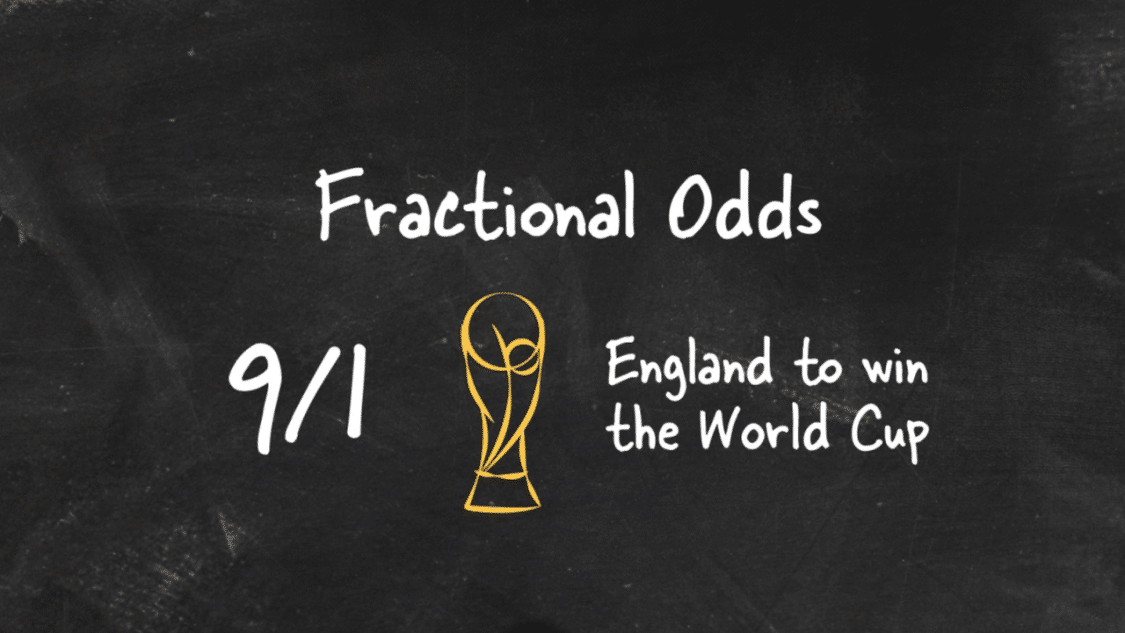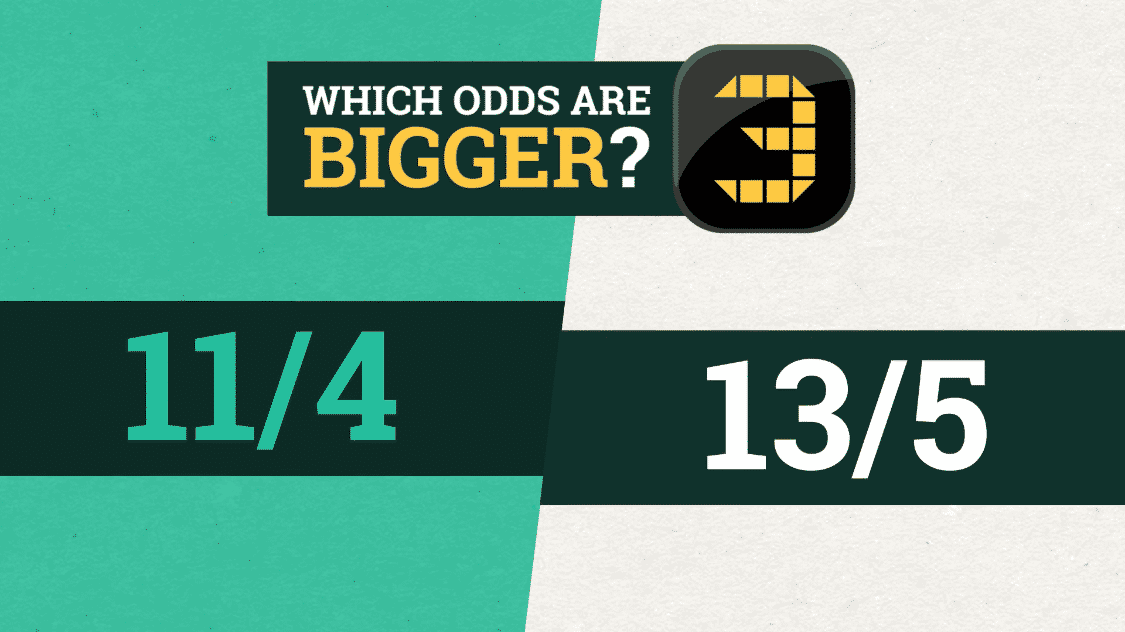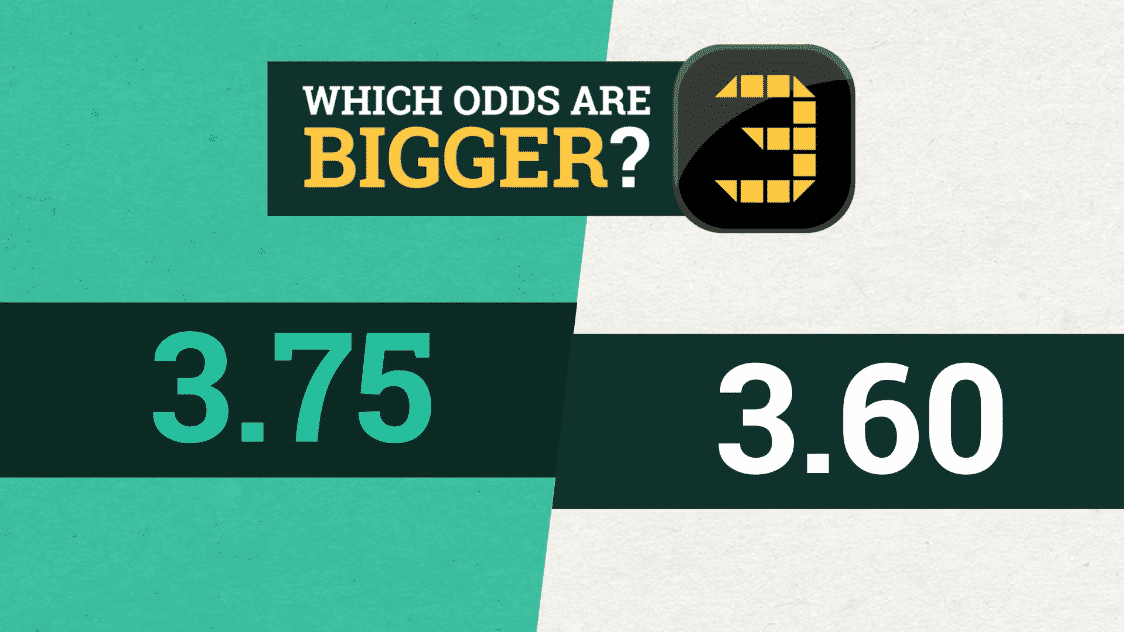Matched betting is available to everyone, even those of you who have never placed a bet before. If that’s you and you want to know more about betting odds, you’re in the right place!
In this guide, I’ll explain what betting odds are, how they work and how we can use them to work out the probability of an event occurring.
What are betting odds?
Betting odds are numbers used by bookmakers to represent the probability of an outcome occurring and tell us how much they’re willing to pay out on a winning bet.
Betting odds may seem a little confusing to start with, but they’re actually quite straightforward once you’re familiar with them.
What is probability?
Probability is the likelihood of an outcome happening and is usually displayed as a percentage.
For example, if we were to toss a coin, there are two possible outcomes. There’s a 50% chance that the coin will land on heads and a 50% chance that the coin will land on tails.
How do betting odds work?
Betting odds are displayed as fractions or decimals and tell us how much we stand to win if our bet is successful.
Traditionally, bookmakers display their odds as fractions, such as 9/1 on England to win the World Cup.

Fractional odds explained
Fractional odds tell us how much we stand to win in relation to our stake. The number on the left is the amount we stand to win if we stake the amount on the right.
So, if we bet £1.00 on England to win the World Cup at odds of 9/1, we’ll win £9.00. We’ll also get our £1.00 stake back, giving us total returns of £10.00.
Here are some other examples…
5/1 – We’ll win £5.00 for every £1.00 we bet
6/4 – We’ll win £6.00 for every £4.00 we bet
1/2 – We’ll win £1.00 for every £2.00 we bet
Decimal odds explained
Decimal odds show us how much a winning bet will return, inclusive of our stake. We simply multiply our stake by the odds, to get our total returns.
So, if we bet £1.00 on England to win the World Cup at odds of 10.00, we’ll get £10.00 back, which includes our £1.00 stake.
Here are some other examples…
6.00 – A £1.00 bet would return £6.00
2.50 – A £4.00 bet would return £10.00
1.50 – A £2.00 bet would return £3.00

As you can see, the fractional odds of 9/1 and the decimal odds of 10.00 return exactly the same amount. They’re just different ways of displaying things.
Which odds format is best?
I think if you asked a regular punter, they would probably favour fractional odds because that’s what they’re used to betting with.
When it comes to matched betting though, decimal odds are the clear winner. They’re much easier to compare at a glance, which is an essential part of the matched betting process. Betting exchanges display their odds as decimals too, so it makes sense all round to go with decimals.
To illustrate just how much easier decimal odds are to compare than fractions, take a look at the following graphics…


I’m sure you’ll agree, it’s much easier to compare the decimal odds at a glance than it is their fractional equivalents above.
What are moneyline odds?
Moneyline odds, also known as American odds, are commonly used in (you guessed it) America. They’re displayed as positive or negative values, such as +500 and -200.
You won’t ever need to use them for matched betting, but they’re worth mentioning as you’ll no doubt come across them as an option at some point.
A positive value of +500 tells you that you’ll win $500 for every $100 staked. A negative value of -200 tells you that you need to stake $200 to win $100.
Fractional to decimal odds
We shouldn’t need to manually convert odds all that often as we can simply change our odds preference at the bookmakers.
I’ve also created an Odds Converter tool that will help you convert fractional, decimal and moneyline odds into your preferred format. You can also get the implied probability of an outcome happening based on the odds you’ve entered.
To be honest though, after a while you’ll probably find yourself converting odds in your head without even thinking.
Example
In this example, we’ll convert fractional odds of 9/1 into decimal odds.
To do this, we simply divide the number on the left by the number on the right and then add one, which accounts for our stake…
…9 + 1 = 10
So, fractional odds of 9/1 is the same as decimal odds of 10.00.
Here are some other examples…
5/1 – 5 divided by 1 equals 5, plus 1 equals 6.00
6/4 – 6 divided by 4 equals 1.5, plus 1 equals 2.50
1/2 – 1 divided by 2 equals 0.5, plus 1 equals 1.50
Calculating implied probability
Implied probability is simply the conversion of betting odds into a percentage. It gives us a rough idea of how likely something is to happen.
The actual probability of an outcome happening is usually a little less than the implied probability. This is because betting odds factor in the bookmaker’s margin. Bookmakers offer odds that they believe are lower than the actual chances of something happening. This is how they make their money in the long-term.
Example 1
In this example, we’ll calculate implied probability from fractional odds of 9/1.
To do this, we simply divide the number on the right by the sum of both numbers and then multiply by 100…
…1 ÷ 10 = 0.10…
…0.10 × 100 = 10
So, if something has fractional odds of 9/1, it has an implied probability of 10%.
Here are some other examples…
5/1 – 1 divided by 6, then multiplied by 100, equals 16.7%
6/4 – 4 divided by 10, then multiplied by 100, equals 40%
1/2 – 2 divided by 3, then multiplied by 100, equals 66.7%
Example 2
In this example, we’ll calculate implied probability from decimal odds of 10.00.
To do this, we simply divide one by the decimal odds and then multiply by 100…
…0.10 × 100 = 10
So, if something has decimal odds of 10.00, it has an implied probability of 10%.
Here are some other examples…
6.00 – 1 divided by 6.00, then multiplied by 100, equals 16.7%
2.50 – 1 divided by 2.50, then multiplied by 100, equals 40%
1.50 – 1 divided by 1.50, then multiplied by 100, equals 66.7%
Final words
That’s pretty much everything you need to know about betting odds and how they work.
In a nutshell, betting odds give us a rough probability of an event occurring and they tell us how much money our bet will return if it wins.
Don’t worry if things still feel a little alien at this point. I’ve every faith you’ll get to grips with them in no time!
Learn matched betting the free, easy way.
The Matched Betting Academy
- Logically structured to tackle strategies and offers as you’re ready for them.
- Bag profits every step of the way. About £600 from welcome offers, and another £500 monthly.
- Make £15 from your very first offer.



Got a question?
Leave me a comment below…
I usually respond within 24 hours.
Matt Kirman – Matched Betting Blogger
Since 2014, I’ve blogged over £90,000 worth of profit, and made it my mission to make matched betting accessible to everyone.